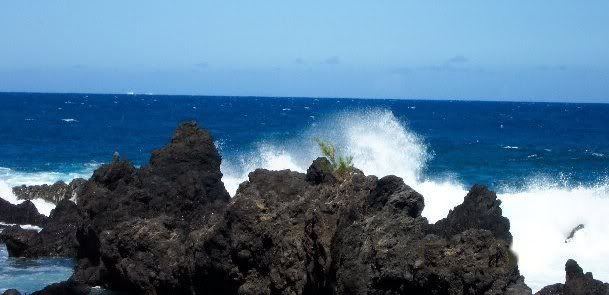September 29, 2003
The Frugal Traveler comes to Hilo
I was at a meeting of local business people and they were all talking about this article in the New York Times about Hilo so I thought that I would blog it. It is pretty cool.
Aloha for now I will write later.
September 21, 2003
FRUGAL TRAVELER; On the Big Island, Hilo Is the Perfect Rainy-Day Place
By DAISANN McLANE
BEFORE I arrived in Hilo, Hawaii, I considered myself to be a connoisseur of rain. I figured I had seen just about every sort of wet weather on my travels, from warm afternoon thundershowers in the Caribbean to ankle-deep monsoon downpours in Bangkok and damp chilly drafts of London in March.
But in Hilo, the rain is amazing. It comes and goes, the weather sometimes changing from wet to dry within seconds. In July, during four days there, I woke up one morning to a depressing overhead canvas of gray and white clouds stretching across the sky. A persistent drizzle played percussion on the windshield of my rental car.
Say goodbye to the scenic drive, hello to museums and thrift shopping for hula girl lamps and Hawaiian shirts, right? Wrong. Forty minutes later, the sky was azure, the sun ferocious.
The small, old-fashioned city of Hilo is on the east coast of the Big Island of Hawaii, in a perfect position to catch the clouds that form when the warm, moist Pacific Ocean trade winds hit the long, cool slopes of Mauna Loa. The accordionlike folds and grooves of the jewel-green slopes and the uneven coastline and fluctuating ocean temperatures ensure that clouds meander around Hilo as unpredictably as ghost spirits. One day, around noon, I was walking down a sunny street in Hilo, worried because I'd left the sunscreen back in the room. Then I glanced across the street: the other side was shady and bathed in a vaporous mist.
I soon grew to love Hilo rain. It is a reason this city of around 50,000 has remained largely untouched since the days when it was the thriving center of the Big Island's plantation economy in the 19th and early 20th centuries. While the Kona area, on the west coast of the Big Island, has become a major Hawaiian tourist draw, Hilo remains sleepy and mostly condo-free -- few are enticed to build in an area that typically receives measurable rain 278 days of the year.
As for resorts, Hilo doesn't have any; only a handful of somewhat faded old Holiday Inn-type hotels. (The one I spent a night in, the Hilo Hawaiian, had 70's-style lamps fit for eBay, and a kitschy plastic doorknob sign: ''Maid, Please Have This Room Made Up Wiki-Wiki'').
Hilo's walkable downtown, with its Art Deco buildings and renovated five-and-dime-store facades housing Salvation Army and independent thrift shops, is a time capsule of pre-World War II Hawaiiana. At the Pacific Tsunami Museum, you can see in the old gray and sepia-toned photographs illustrating the exhibits about the tsunami that devastated Hilo in 1946 that the main street doesn't look much different from the actual street outside; only the cars have changed. The Tsunami Museum is a good place to start exploring the city, to get a sense of the precariousness of life in a place where 50-foot waves have been known to roll in and sweep entire neighborhoods away. (The last tsunami hit Hilo in 1960; a sophisticated warning system now keeps the city's residents relatively safe from disaster.)
I rolled into Hilo from the airport on a Thursday afternoon and almost immediately had a little adventure, the first of many, big and small. Losing my way going to my motel in a confusion of one-way streets, I passed a grand old building with enormous two-story windows, in which I could see people sitting at linen-covered tables eating.
The idea of a leisurely lunch hit all my buttons. I finally found my motel, the Dolphin Bay Hotel, nearby, dropped my gear in the room (which was big, a bit dark, but had a kitchenette with a fridge and stove), and walked to the restaurant.
At 2:30, they were still serving lunch -- and what a lunch. I had stumbled into Kaikodo, an outpost of fine dining with an award-winning chef opened just two months before by Howard and Mary Ann Rogers, who are also New York art dealers. The eclectic, Orient-inspired décor included one of those Chinese wooden bed chambers with a roof and walls, so I ordered the most Asian-sounding things on the pan-Pacific menu of the chef Mike Fennelly.
The spring rolls, stuffed with big fresh chunks of white mahi-mahi, were crisp and light. A main course called Szechuan chicken turned out to be a Hawaiian interpretation, tangy and sweet rather than fiery, with toasted macadamia nuts replacing peanuts, and a side of coconut rice adding tropical sweetness.
The best part of the meal was the hot lava cake dessert, a tribute to the nearby Hawaii Volcanoes National Park, with its lava flows. On the plate, a miniature warm flourless chocolate tort was accompanied by a side of white ''smoke'' -- coconut ice cream -- and a drizzle of red ''lava'' -- raspberry sauce. A fine lunch, in Hilo, came to $37, including two glasses of wine.
The small adventure of eating a volcano was a teaser for the larger adventure of actually visiting one. The Hilo area's most popular local attraction is Hawaii Volcanoes National Park, a 40-minute drive from the city. At the park, the parade begins at Chain of Craters Road, a narrow lane that abruptly ends about a mile and a half shy of the lava flow.
I parked alongside about 100 other cars at the end of the road, and headed down the path about an hour before dusk, the time the rangers recommend for the best lava viewing. After about a half mile the path ends, and you must begin walking inland across what is surely one of the bleakest landscapes on earth: a graphite black, bubbly mound of rocks stretching in all directions. Approaching this field, a smell of sulfurous emissions assaults the throat and tear ducts, while ominous plumes of smoke rise in the distance.
Park rangers are everywhere, to make sure that visitors follow the marked path and don't wander astray on the lava field. (I'd prepared for the mile hike across the field as instructed in the visitors' guide, wearing hiking boots and carrying a liter of water, and was shocked to see that most of my fellow walkers were wearing light trainers, and that some were carrying small infants in backpacks).
At the end of this infernal trail, the payoff was a view, from about 150 yards distant, of narrow rivers of orange lava -- I counted five -- bursting from black rock like the streams of a waterfall. I watched it, transfixed, until the smoke and fumes became too much.
My home base in Hilo changed every night, because I had accidentally chosen one of Hilo's busiest weekends to visit, during the town's annual Big Island Music Festival (formerly the Slack Key Music Festival). But each of my Hilo hosts whose inns were full hospitably helped me find a lodging for the following night in the city's network of terrific bed-and-breakfast operations, with rooms costing an average of $95 a night. Private homes, like the Bay House Bed and Breakfast, have been built to house overnight guests, with enormous rooms, designer furniture, private baths -- and in the case of my room at Bay House, a private balcony overlooking Hilo Bay.
The next night I ended up at the Inn at Kulaniapia Falls, another large home with a huge property that includes a river and two waterfalls (my room, decorated in Chinese antiques, overlooked the larger one).
The temptation was to just hang out in my splendid Hilo accommodations, watching the rain come and go, contemplating waterfalls or seascapes from my balcony, heading out for meals at Kaikodo or to the excellent sushi bar I discovered in the Nihon Restaurant and Cultural Center. But there was more to see.
Early one morning, I set out on a driving expedition north of Hilo, along the section of coastline known as Hamakua, until quite recently a string of sugar plantations. The small settlements along the 45-mile stretch of coastal highway (dubbed the Hamakua Heritage Coast) have the feel of company towns, with their one-stop, wooden-fronted general stores, tiny low cottages and plantation manager's ''mansions.''
Near the start of the route, which ends precipitously at a cliff overlooking the broad, green Waipio Valley, is one of the lushest, most beautiful tropical botanical gardens I have ever visited. The Hawaii Tropical Botanical Garden in Papaikou, at $15 admission, is also one of the most expensive, but worth it for its dizzying collection of palms and orchids, and thickets of rich red hanging heliconia. The jungle paths descend to black rocks and crashing ocean. Lucky visitors (I wasn't) catch glimpses of turtles cavorting on the shore.
HONOKAA, the largest town on the route, felt full of ghosts, with its Wild West-style wooden storefronts. Most of them now house antiques and collectibles stores, rather than the dry goods and food supplies that met the needs of Honokaa's original population of migrant Japanese, Filipino and Puerto Rican workers in plantation days. Yet the everyday Japanese household items in the shops, from porcelain tea pots to ivory chopsticks, hinted at the past. And shortly after lunching at an ''Italian'' restaurant where the cook spoke Spanish and played salsa tapes of Celia Cruz, who had died the day before, I walked on Honokaa's main street and saw a man with a bata drum decorated with a red, blue and white Puerto Rican flag.
On my last afternoon in Hilo, I went to the music festival at Hilo's civic center, which resembles a high school gym. Sitting in the bleachers, I leaned back with the locals, eating my $1 bento box lunch (sold at a booth alongside hamburgers and fried poi balls), and listening to Big Island musicians pluck the gentle guitar sounds of what may be the most mellow music in America. As the guitarists played, their music mingled with the soft fall of a passing rain: perfect.
I enjoyed the Hilo moment, because I knew that any minute now the weather would change.
The bottom line
I spent an average of $144.60 a day on lodging, food and activities during four days and nights in Hilo in July.
Getting There
My round-trip ticket from New York (J.F.K.) to Honolulu in high season cost $874, including all taxes, on United Airlines, (800) 864-8331, www.ual.com.
From Honolulu, I traveled to Kauai, then to Hilo, on Hawaiian Airlines, (800) 367-5320, www.hawaiianair.com. The price was $336 round trip.
I rented a compact car from Avis, (800) 230-4898, www.avis.com. The rate, with taxes and fees but not insurance, was $39.99 a day. I spent about $22 on gas.
Where to Stay
Dolphin Bay Hotel, 333 Iliahi Street, Hilo, (808) 935-1466, fax (808) 935-1523, www.dolphinbayhilo.com, is a homey, old-fashioned motel, walking distance from downtown. My large unit (there are 24 in all) had a bathroom with tub and shower, and a kitchenette with a refrigerator and stove. The rate was $73.59, including the 11.5 percent Hawaii tax.
The Bay House Bed and Breakfast, 42 Pukihae Street, phone and fax (888) 235-8195, www.bayhousehawaiicom, is a luxurious home on Hilo Bay with three guest rooms. My large room with private bath had Indonesian antiques, a sitting room and a big lanai, or terrace, overlooking the water. Breakfast is a buffet of breads, muffins, cereals and fresh fruit. The rate was $111.41, including tax.
The Inn at Kulaniapia, 1 Kulaniapia Drive, (888) 838-6373, fax (808) 935-8088, www.waterfall.net, is more like a resort than a B&B. About four miles from downtown, it has only four rooms, but sits on 22 acres with a garden, a river and two waterfalls. Breakfast, served in a big kitchen and patio, includes eggs cooked to order. My large room, with Chinese antiques and a lanai overlooking a waterfall, was $110.14 with tax.
The Hawaiian B&B Association, (866) 323-2248), an islandwide network of innkeepers, lists specials at www.stayhawaii.com.
Hilo Hawaiian Hotel, 71 Banyan Drive, (800) 367-5004 for reservations or (808) 935-9361, fax (808) 961-9642, www.castleresorts.com/HHH, is a chain-type hotel on the Hilo waterfront with 286 rooms. My standard double, which I booked through www.hotels.com, cost $91.50, including tax and a $10 booking fee.
Where to Eat
At Restaurant Kaikodo, 60 Keawe Street, (808) 961-2558, in a historic former Masonic Temple, standouts included a tangy appetizer of short ribs flavored with a sauce infused with ginger, jalapeño peppers and medjool dates, and a salmon carpaccio cured with vodka and lemon grass. Lunch, with three courses and two glasses of wine came to $37.
There is an excellent sushi bar at the Nihon Restaurant and Cultural Center, 123 Lihiwai Street, (808) 969-1133. Dinner, with sake, came to $45.
For an inexpensive breakfast or lunch downtown, Canoes Cafe, 14 Furneaux Lane,(808) 935-4070, is a good choice. A delicious wrap of bacon and eggs in a flour tortilla, plus lemonade, came to $6.
What to Do
Hawaii Volcanoes National Park, www.nps.gov/havo, is open 24 hours a day. An eruption hot line, (808) 985-6000, tells you the conditions at the active lava flow that day. You can also talk to one of the rangers in the visitor's center: (808) 985-6017. The center is about 40 minutes southwest of Hilo, and admission is $10 a car.
The Pacific Tsunami Museum, 130 Kamehameha Avenue, (808) 935-0926, www.tsunami.org, has exhibits on wave formation and on the major tsunamis to hit Hilo this century, in 1946 and 1960. It's open Monday to Saturday; general admission is $7.
Hawaii Tropical Botanical Garden, 27-717 Old Mamalahoa Highway, Papaikou, , (808) 964-5233, www.hawaiigarden.com, is about eight miles north of Hilo. Admission, $15.
The annual Big Island Hawaiian Music Festival brings together musicians from around the island, including slack key steel guitar and ukulele players. For information on next year's festival, the third weekend in July, call the East Hawaii Cultural Council, (808) 935-9085 DAISANN McLANE
Copyright 2003 The New York Times Company | Permissions | Privacy Policy
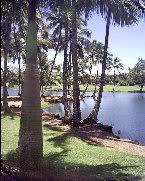




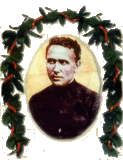


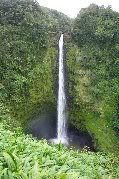


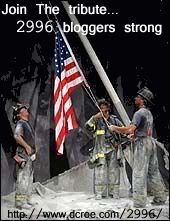




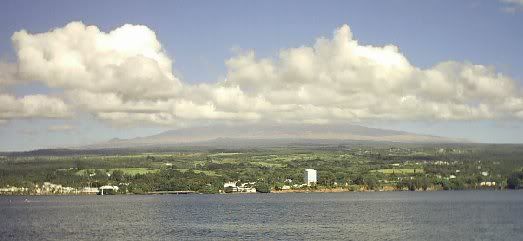
 based on design by mela
based on design by mela